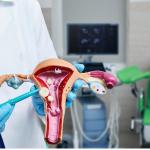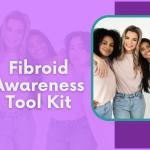
Who Is Most Likely to Get Fibroids?
Unfortunately, the answer to the question, “What age do fibroids develop?” isn’t clear-cut. Studies show that up to 70% of women in the US have or will develop fibroids by age 50; however, that percentage increases to over 80% in African American women.¹ In general, fibroids most often develop between the start of puberty and menopause. The risk increases with age: Women are far more likely to develop fibroids after age 35.
The exact cause of uterine fibroids is unknown, though the odds of development increase as a woman ages and subside after menopause. Although this is generally the pattern, it is still possible to develop uterine fibroids as a teenager. Uterine fibroids are non-cancerous growths that can be found inside or on the outside of the uterus. While they are benign, fibroids can have a major impact on your life. Several risk factors can increase the chances of women developing fibroids at various ages.
Obesity and a Higher Body Weight
Obesity may play a role in women developing fibroids. Females who are obese are two to three times more likely to develop fibroids than those who maintain a healthy weight. While this isn’t the only factor that impacts whether a woman will develop fibroids, it is one that you can have some control over. Eating healthy and getting enough exercise can help you maintain a healthy weight, which may lower your risk for fibroids.
Family History of Fibroids
Fibroids appear to be somewhat genetic. If a woman’s mother was diagnosed with fibroids, her risk of developing them is three times higher than average. However, many women have lived with the symptoms of fibroids without getting a diagnosis. Your mother or other female family member may have had fibroids and never been aware of the condition.
Not Being Pregnant
Studies indicate that women who haven’t conceived may have a greater risk of developing fibroids. Women with multiple pregnancies have a decreased risk, with each pregnancy reducing the risk even further. However, women who had their last child five or more years ago were two-thirds more likely to develop uterine fibroids than those who had given birth within the last five years.
Early Onset of Menstruation
Because most women experience fibroid growth between puberty and menopause, they are at a greater risk of developing the condition once menstruation begins. Starting their periods early means their hormone levels have increased, which has been linked to fibroid growth. The average age for a girl to start her period is 12.5, but the first signs of puberty begin two to three years earlier. Though it is not exactly clear what causes fibroids to grow, an increase in estrogen is believed to be a key factor.
Beginning Menopause Later Than Normal
Women who begin menopause later are at a higher risk for fibroids because they are still producing hormones. Because estrogen and progesterone decrease during menopause, women may be less likely to develop fibroids after this stage of life. However, women after the age of 50 can still have symptomatic fibroids. Symptomatic fibroids are those that cause symptoms, such as heavy bleeding, irregular periods, and pain in the abdomen.
MORE QUESTIONS? TALK TO A FIBROID SPECIALIST NOW
What Causes Fibroids in Women?
The exact cause of fibroids in women isn’t known, but there are several theories about what factors can increase their development. Genetics contribute to an increased risk of having fibroids.
Hormones are also factors in the development of fibroids. Women of childbearing age are more likely to develop fibroids because of the increase in estrogen in their bodies. Likewise, insulin-like growth factor is a natural growth hormone in every person’s body that may stimulate the growth of fibroids.
When Should You Be Screened for Fibroids
Women should begin having regular pelvic exams as part of their wellness program once they become sexually active or reach adulthood. Doctors often diagnose fibroids during a routine pelvic exam. In addition, they may order a fibroid ultrasound or MRI to confirm the diagnosis or to locate the fibroids within the uterus.
SCHEDULE AN APPOINTMENT ONLINE
Visit USA Fibroid Centers for Fibroid Treatment
Regardless of the reason behind fibroid growth, treatment is available. USA Fibroid Centers offers Uterine Fibroid Embolization (UFE) for women who suffer from painful fibroid symptoms. UFE is a minimally invasive outpatient treatment that can provide relief. The procedure is simple: A fibroid specialist inserts a tiny catheter into the artery connected to the fibroid through the thigh or wrist. Embolic materials are then injected into the artery to stop blood flow and prevent the fibroid from getting nutrients, causing the growth to shrink and die.
Call us at 855.615.2555 for more information or set up an appointment at one of our many locations across the US to find out more about our non-surgical treatment for fibroids.
Sources
1. Marsh, Erica E., et al. “Burden, Prevalence, and Treatment of Uterine Fibroids: A Survey of U.S. Women.” Journal of Women’s Health. (2 November 2018). NIH. https://www.ncbi.nlm.nih.gov/pmc/articles/PMC6247381/



